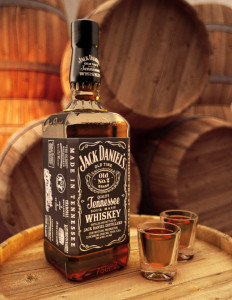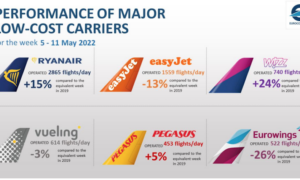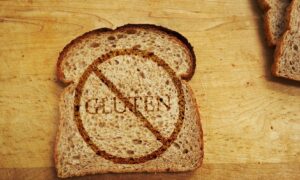(Editor’s note: This was part of Dispatches’s test content on LinkedIn. It’s reposted here with updated information.)
Life in Europe can be difficult for American expats. New language. A whole new set of street names and directions. New currency system.
And – I almost hesitate to mention it – you might not find your favorite brand of bourbon.
(I’ll give you a moment.)
That’s right. The fastest-growing distilled spirits in the United States has been slow to gain a European foothold.

The U.S. Distilled Spirits Council (familiarly called “DISCUS”) is positively giddy about the sale of bourbon in Europe. Its slide show, which it will provide to anyone who asks, shows that total U.S. exports of distilled liquor were $1.56 billion in 2014, up nearly 53 percent in 10 years. And 70 percent of that total was U.S. whiskey.
The United Kingdom, Germany and Austria were the biggest markets. France, Spain and the Netherlands were significant. But, by-and-large, bourbon’s stratospheric growth remains a U.S. phenomenon.
According to industry research firm IWSR, U.S. sales of super-premium bourbons rose 28.8 percent from 2011 to 2015. Super-premium cognac sales increased only 9.5 percent during that same period. For some perspective, Euromonitor International found 2015 domestic retail bourbon sales were worth $3.8 billion compared to $1.3 billion worth of cognac. Bourbon sales rose 19.1 percent vs. 8.5 percent for cognac year-over-year growth.
All that said, there are signs that European distillers are waking up to the bourbon threat. Bloomberg just reported Hennessy is introducing a “bourbon-like” spirits.
There are a couple of “howevers,” however, for bourbon globally:

Bourbon
• Global bourbon sales equal one-quarter of that of scotch, according Euromonitor International, but growing in double digits.
• To DISCUS, the category includes all American whiskeys. “We can’t separate out the bourbon from other American whiskeys, particularly Tennessee whiskey,” says Frank Coleman, DISCUS senior vice president. “Jack Daniel’s makes up a large percentage of US spirits exports, as much as half in some markets.”
Jack may be a fine drink, but any self-respecting Kentucky bourbon drinker will tell you that Jack AIN’T bourbon.
• Real Kentucky bourbon may in fact be proliferating on the shelves of Europe’s bars and liquor stores, but it’s not going to be a particularly wide selection. In fact, in many bars, the bourbon selection begins and ends with Maker’s Mark.
Dispatches’s co-CEO Terry Boyd found out the hard way, finding one – and only one – bourbon from Kaiserslautern to Vienna to Amsterdam to Berlin. Maker’s Mark. Which is assuredly not his bourbon of choice. In a random survey of spirits shop owners and bartenders across Europe, the consensus is bourbon isn’t really even on the European radar, at this point. This weekend at an upscale bar in the Netherlands, the bartender pulled out a dusty bottle of Jack Daniel’s when Boyd asked for bourbon. So sad ….
Europe is still dominated by Scotch among the grain-based spirits, and Cognac among the spirits distilled from grapes and other fruits.
“Remember,” says Chuck Cowdery, the writer who covers all things bourbon on The Chuck Cowdery Blog, “it’s starting from a base of nearly zero. Bourbon was not a export item until about 25 years ago, and then much of the growth was in Japan.”
And even today, warns Cowdery, “if you expect to find all the limited editions and special releases, you’ll have a hard time in Europe. There’s just not the market for it. And they don’t produce it in sufficient volume – by definition – to support exporting it.”
DISCUS is working to change that. Since 2006, the organization says it has been running an export promotion program called “Cheers from the USA,” mostly focusing on American whiskeys (remember the DISCUS definition of “American whiskey” though) “by educating media and distributors about the unique heritage, taste and mixability.”
“In Europe, Asia and Latin America, we have partnered with our embassies, U.S. ambassadors and consul generals, and Agricultural Trade Offices to host tasting events, often at the U.S. Ambassador’s residence, sometimes in conjunction with major trade shows such as Bar Convent Berlin,” says Coleman of DISCUS. “In Europe, this includes Germany, Russia, Bulgaria, Romania, Austria and France.”
At present, says blogger Cowdery, you’ll find bourbon to drink if you’re in the right place. Germany has always had a fair bourbon base, he says, because so many U.S. troops are stationed there.
“The U.K. is probably the best Kentucky bourbon market right now and Spain does pretty well,” Cowdery says. “And you’ll find the most bourbon brands to drink in cities like London, Paris, Berlin – the big international cities with a lot of expats.”
There are a couple of things fueling the growth of bourbon. One is the growing number of expat Americans living and working in Europe. Another is native Europeans’ appreciation of all things American.
“Even those opposed to U.S. policies love American culture,” says Cowdery, “and bourbon comes under that heading – right along with Levi’s, rock and roll and cowboys.”
Also, it’s regarded as an American luxury brand, which makes it that much more appealing, “Anywhere there’s an emerging economy and growing middle class, there’s a good market for American luxury goods,” Cowdery says.
Finally, he says, don’t compare bourbon’s popularity in Europe to Scotch whiskey, the native brand.
Cowdery again: “To the European palate, bourbon tastes better than Scotch, sweeter, and that works well for bourbon. Many European brandy and cognac-drinkers take to bourbon.”
So growth is on the way, just temper your expectations. In the right markets, the more worldly cities, you’ll begin to see a proliferation of brands. “In many respects, Berlin is more like New York than it is like Stuttgart,” Cowdery points out.
In the near future, expect to see Woodford Reserve, Evan Williams and Jim Beam join Makers Mark on bar shelves. As for Bulleit, Pappy Van Winkle or George Stagg – that might take some time.















